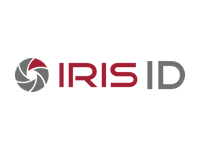At the end of 2022, 108.4 million people worldwide became displaced as a result of conflicts like the war in Ukraine, human rights violations, and other persecution. Millions of people have been left stateless, and the UN Refugee Agency (UNHCR) officially classed 35.4 million of these displaced people as refugees. But how can Biometric ID help and what is it exactly?
When refugees are forced to flee their homes with little warning, important documents are often left behind or lost in the chaos of crossing borders and refugee camps. Millions of people find themselves far from home without any means of identification, and the problems this can cause are wide-ranging. Without an ID, refugees can’t access health care, employment, or education and it also makes it nearly impossible for humanitarian agencies to track individuals or reunite families. Refugee camps become harder to manage with civilians inside them difficult to track and care for and host nations encounter security issues.
This is where Biometric ID comes in. Biometrics can give refugees a way of identifying themselves in a unique way only identifiable to themselves. This in turn leads to better protection and access to vital services. Keeping track of the huge numbers of refugees entering camps can vastly improve humanitarian services, and host nations can use the data to prevent fraud and improve refugee relations in local communities.
In this article, we’ll discuss how a lack of ID impacts the refugee crisis, and how Biometric ID technology may be the key to solving these issues.
Running efficient refugee camps
When refugees arrive at a camp, the first thing they have to do is register to access aid. Traditionally this process involves manually fingerprinting each individual and filling out time-consuming paperwork. Fingerprinting requires training, and paper records are difficult to archive and keep track of, and as refugee populations increase at camps, this process becomes even more complex and harder to maintain. It is vital to have a clear picture of the number of refugees at a camp at any given time to provide adequate security, housing, sanitation, and food and water. The traditional method of registration also makes it difficult to reunite separated family members as it requires aid workers to physically search through thousands of documents.
Biometric ID registration has proven effective at mitigating some of these issues. Humanitarian workers collect each individual’s unique characteristics and store them in a digital database. These include fingerprint scans, iris scans and facial images, and registering them only takes seconds. Refugees are then provided with personal ID cards that are valid throughout the facility for them to access the aid they need. This data allows agencies to effectively manage the facilities, and the registration process is much quicker and easier. The digital database also makes it possible to locate family members and loved ones in minutes.
The Biometric ID technology used to register refugees is suitable for difficult environments and can endure extreme conditions such as extreme heat, dust and power outages. This system is much more robust and reliable than traditional methods.
A better life after resettlement
Around 850 million people worldwide lack access to identification in general, not just Biometric ID. This makes accessing services and benefits very difficult, particularly for refugees living in host countries. Without an official ID, individuals can’t access healthcare, education or banking and they can’t get a mobile phone contract or work. This often leads to discrimination and abuse, with women being particularly vulnerable to exploitation if they are unable to access jobs. Access to these basic human rights is essential for refugees to assimilate into the countries and communities they have been resettled.
In 2022, the Cameroon government and the UNHCR ran a successful Biometric registration program, where 6,000 refugees from the Central African Republic received Biometric IDs. This gave them access to healthcare, education, bank accounts, and mobile phone subscriptions. Some of Cameroon’s refugees had been waiting nearly 10 years for access to these basic public and financial services.
Giving refugees access to id allows them to contribute to the society they live in. This reduces tensions with local communities and allows refugees to build a new life. Biometric IDs also allow host counties to manage the refugee population. They help authorities to identify criminals, manage border security and ensure the right people are accessing the aid they are entitled to.
Biobox: Revolutionising Biometric ID enrollment
At Arana Security, we’ve created an all-in-one Biometric enrollment and verification solution. Biobox allows you to capture and store Biometric ID data in under 4 minutes, using facial, iris and fingerprint data for layered protection against ID fraud.
Biobox is flexible and easy to use. It includes the following components:
- Flatbed fingerprint scanner
- Iris scanner
- Laptop
- HD camera
- Biometric fingerprint, iris and facial recognition software
- Waterproof, shockproof case
Biobox can be used across a variety of scenarios. It is ideal for Biometric ID enrollment across law enforcement, banking, education, border control, and in refugee camps.
We worked on a project for the United Nations, where they opted to use Biobox. We successfully provided a secure and portable solution to capture Biometric data to issue ID cards.
To find out more about Biobox or learn more about Biometric ID, book a consultation today.


















